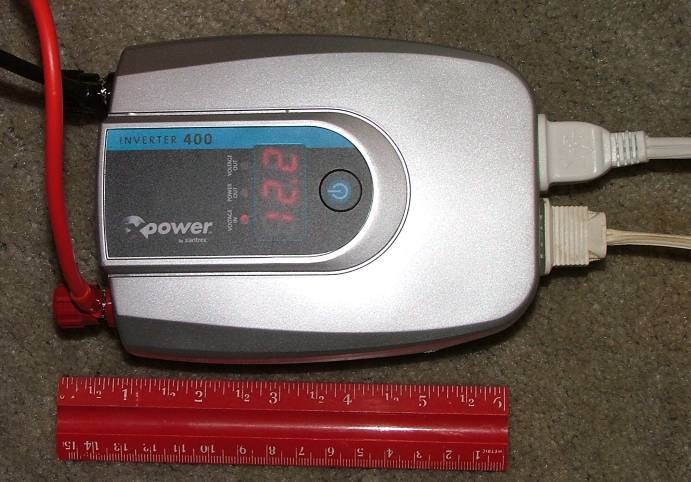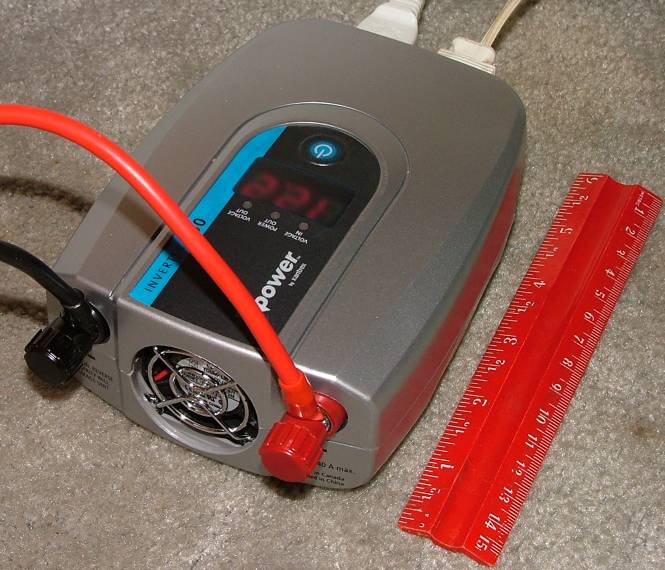I have built a backup power system with batteries, PV panels, and a largish (2000W) inverter. But if I only need to run, say, one light bulb, the large inverter is very inefficient, using about 25 watts just to run itself. (It uses much less than that while in standby mode, waiting for the freezer thermostat to demand power.) Thus the idea of using an auxillary, smaller, inverter for lighting and other low-power uses such as a small radio.
A while back I posted about my attempt to use a very cheap inverter (the kind that is supposed to be used for charging a laptop in a car) to power an AC CFL off of a 12V battery. Despite a claimed 70-watt rating, that inverter could not start the CFL, and lit a 4W night light only dimly.
I also found that 12V CFLs with pleasant (warm) light are hard to find and expensive relative to AC CFLs. What to do?
With darker days approaching, I searched for other, better quality, small inverters. I found that the standby power loss, and efficiency while running one or two CFLs, is not much different between inverters in the 100-400 watt range, so getting one that is somewhat larger than the minimum may have more advantages than disadvantages.
Example 100W model - was recently on sale at West Marine for about $16 - cheaper than many 12V CFLs.
I ordered a bigger, "400-watt" (rated 320W continuous) model made by Xantrex (same brand as larger inverters popular for off-the-grid applications), which has a power switch, a cooling fan, a digital readout of input voltage and output power, and also comes with two cables. And all for $25 shipped!
(The pictures there are lousy, see better one, and specs, here - and also see my photos below.)
It arrived today and seems to work well. Standby current I measured at about 280 mA (about 3 watts). Running one 15W CFL it is quiet and cool. Running more CFLs, about 50W total, after a while it warmed up a bit (just noticable to a hand touching the case), and made some clicking sounds and once in a while the fan turned on for a fraction of a second. I think the clicking sounds are from the fan "almost" turning on. (I'm surprised the fan control circuit does not seem to have hysteresis.)

